Festival del Eoksae de Seúl (서울억새축제)
8.8Km 2025-10-23
Haneulgongwon-ro 95, Mapo-gu, Seúl
02-300-5567
El Parque de la Copa Mundial se situó en Nanjido, un maravilloso ecosistema donde las flores florecían en cada estación y donde las aves migratorias volvían cada año. Lamentablemente, Nanjido se usó como vertedero entre 1978 y 1993, convirtiendo ese bello ecosistema en un lugar lleno de basura. Tras el proyecto de recuperación de 1996, el lugar volvió a sus inicios y se creó el Parque de la Copa Mundial. Este parque está formado, a su vez, por 5 parques: Pyeonghwa, Haneul, Noeul, Nanjicheon y Nanji Hangang. La zona del Parque Haneul (Parque del Cielo) está llena de eoksae (juncos asiáticos) y se convierte en el lugar de celebración de este festival en octubre de cada año. Aunque el parque está abierto al público durante el día, normalmente cierra por la noche para reducir los efectos negativos de los visitantes en las plantas y animales. Sin embargo, durante el festival permanece abierto hasta las 22:00 horas.
Tumbas Reales Uireung en Seúl (서울 의릉(경종·선의왕후)) [Patrimonio Cultural de la Humanidad de la Unesco]
8.9Km 2025-06-27
Hwarang-ro 32-gil 146-20, Seongbuk-gu, Seúl.
Uireung son las tumbas del rey Gyeongjong (1688-1724, rey de 1720 a 1724), el 20º rey de la Ddinastía Joseon, y su segunda esposa la reina Seonui (1705-1730). El rey Gyeongjong fue el primer hijo del rey Sukjong y Janghuibin, una de las concubinas del rey. El rey Gyeongjong nació débil y anémico, y falleció solo 4 años después de ser proclamado rey, sin ningún logro político de importancia. La reina Seonui fue princesa en 1718 y reina en 1720, cuando el tey Gyeongjong ascendió al trono. Está considerada una reina prudente. Las tumbas Uireung se diferencian de otras tumbas reales en que no están una al lado de la otra, sino que siguen la teoría geomántica y una está justo detrás de la otra.
Paseo de las Estrellas de Gwanak (관악별빛산책)
9.0Km 2025-12-11
Sillim-dong 1642-7, Gwanak-gu, Seúl
02-828-5743
Complejo Deportivo de Seúl (Estadio de Jamsil) (서울종합운동장(잠실종합운동장))
9.0Km 2024-02-27
Olympic-ro 25, Songpa-gu, Seúl
+82-2-2240-8800
El Complejo Deportivo de Seúl se sitúa en el barrio Jamsil-dong de Songpa-gu y fue construido en el año 1976. Al sur, se localizan los parques y los apartamentos para los jugadores; al este, los Apartamentos de Jamsil; al norte, el río Hangang y el arroyo Tancheon; y al sudoeste, el Parque Olímpico. Cuenta con muchísimas pistas, canchas y patios ideales para practicar distintas disciplinas deportivas. Además, es un lugar muy histórico, ya que fue aquí donde se celebraron muchísimos eventos internacionales de gran importancia como el Décimo Campeonato de los Juegos Asiáticos y los Juegos Olímpicos del año 1988. Actualmente es también del anfitrión de muchos partidos de fútbol y conciertos musicales.
Parque Nakseongdae del Monte Gwanaksan (관악산 낙성대공원)
9.1Km 2021-07-16
Nakseongdae-ro 77, Gwanak-gu, Seúl.
+82-2-879-6525
El Parque Nakseongdae fue construido como tributo al General Kang Gamchan (948-1031) de la dinastía Goryeo. En 1973, el Gobierno Metropolitano de Seúl reogranizó el lugar de nacimiento del general, que dio como resultado algunas modificaciones en el parque. Además de la contrucción del santuario Anguksa y edificios anexos en el parque, la pagoda de tres plantas fue movida al lado del santuario, y un monumento de 2 metros fue erigido en su localización original para marcar el significado histórico del lugar.
Gwangyang Bulgogi Bonga (광양불고기본가)
9.2Km 2025-06-24
16, Dogok-ro 99-gil, Gangnam-gu, Seoul
Gwangyang Bulgogi Bonga maintains the traditional Korean bulgogi recipe that has been passed down for three generations. Using good-quality Korean beef fillet, the dishes holds the true taste of Gwangyang bulgogi roasted on a charcoal burner. Scorched rice and cold noodles are also delicious, as well as other side dishes.
Estadio Mokdong (목동종합운동장)
9.2Km 2021-03-22
Mok-dong, Yangcheon-gu, Seúl.
+82-2-2240-8800
Inaugurado el 4 de noviembre de 1989, el Estadio de Mokdong alberga diversas instalaciones deportivas. El estadio principal es usado para partidos de fútbol y eventos de atletismo, y puede albergar a 22.000 personas. El estadio de béisbol tiene una capacidad de 16.000 espectadores. Una pista de hielo bajo techo, gestionada por el Centro de Deportes Invernales de Corea, es usada para hockey sobre hielo, patinaje artístico y otros deportes de invierno; y cuenta con capacidad para 7.000 personas. Además, el estadio cuenta con una zona de tiro bajo techo, una club de fitness, un gimnasio y diversas instalaciones de servicios.
Parque de la Copa Mundial (월드컵공원)
9.3Km 2022-12-15
Haneulgongwon-ro 84, Mapo-gu, Seúl.
El Parque de la Copa Mundial fue construido en conmemoración del 17mo. Mundial de Fútbol de FIFA. El parque abrió el 1º de mayo de 2002, y era un terreno que contenía más de 92 millones de toneladas de basura. Se tardaron 6 años en estabilizar los desechos (se calculó la cantidad para la prevención de desechos que contaminan el medio ambiente) y un año adicional para la construcción del parque. El parque se ubica cerca del Estadio de la Copa Mundial de Seúl y está constituido de 5 pequeños parques que incluyen el parque Pyeonghwa (paz), Haneul (cielo) y Noeul (atardecer). El parque es muy concurrido por gente joven que disfruta de andar en patines.
Parque Pyeonghwa (Parque de la Paz): Es el parque más cercano al estadio de la Copa Mundial de Seúl, con un estanque, un jardín, una plaza de juegos para niños y un bosque. Es un área muy popular para hacer pícnic y estudios de ciencias de la naturaleza.
Parque Nanjicheon: Este parque se desarrolló cerca del arroyo Nanji, que fluía bajo el parque Haneul. Antiguamente estaba desbordado con las aguas cloacales que caían de las tierras rehabilitadas, pero ha sido restaurado, convertiéndose en un hermoso parque con aguas limpias. Dispone de un escenario al aire libre e instalaciones deportivas.
Parque Nanji: El parque Nanji se desarrolló en la ribera del río Hangang. Dispone de un campo de campamento, cancha de fútbol, cancha de básquet, espacio verde, un pueto para cruceros y un área para estudios de ciencias naturales.
Parque Haneul (Parque del Cielo): De los 5 parques del estadio, el parque Haneul es el que se halla a mayor altura. En el pasado, fue una montaña de basura, pero ahora es una colina verde con 22 miradores y que ofrece un hermoso panorama de la ciudad de Seúl, el monte Namsan, el monte Bukhansan y el monte Gwanaksan. Los 5 generadores eólicos suministran energía al parque y a la oficina administrativa del parque.
Parque Noeul (Parque del Atardecer): El parque Noeul cuenta con un campo de golf de 9 hoyos y ocupa una extensa área de tierra rehabilitada. Este parque se diseñó como una pradera, porque un gran desarrollo habría dañado el medio ambiente, a causa de los desechos enterrados. Este parque brinda un excelente panorama del río Hangang y la oportunidad de capturar un hermoso atardecer.
Durante el Festival de Eoksae, en otoño, mucha gente viene a este lugar a ver las vistas nocturnas, especialmente del Parque Haneul.
Parque de la Ciencia de Seúl (서울특별시교육청 과학전시관)
9.3Km 2024-12-05
Nakseongdae-ro 101, Gwanak-gu, Seúl.
El Parque de la Ciencia abrió en julio de 2004 como centro educativo científico e instalaciones de práctica para estudiantes y profesores, así como también como lugar de cultura para los ciudadanos de Seúl.
Centro Universal de las Artes (유니버설아트센터)
9.3Km 2021-11-12
Cheonho-daero 664, Gwangjin-gu, Seúl.
El Centro Universal de las Artes Universales fue inaugurado en noviembre del año 1981 bajo el nombre Centro de Artes Interpretativas Little Angels. Durante un total de 20 años, ha ofrecido espectáculos culturales y funciones interpretativas, de tal manera que ha colaborado en gran sentido en el desarrollo de la industria cultural y artística de Corea. La edificación tiene un estilo moderno y clásico, con una altura de 4 pisos, y una dimesión amplia que abarca alrededor de 1.200 asientos. Se ha instalado como un complejo cultural y artística, en donde se han realizado grandes eventos y espectáculos: el ballet “Matthew Bourne's Nutcracker”, el musical “Saturday Night Fever", el musical “Nonsense”, la ópera “Yi Sun-shin”, el “Premio de Arte de Baeksang”, un concurso de modelos, etc. El Centro Universal de las Artes se está esforzando para mejorar el ambiente de intercambio cultural tanto del Oriente como del Occidente, y para el desarrollo del arte coreano.
![Tumbas Reales Uireung en Seúl (서울 의릉(경종·선의왕후)) [Patrimonio Cultural de la Humanidad de la Unesco]](http://tong.visitkorea.or.kr/cms/resource/85/2690685_image2_1.jpg)
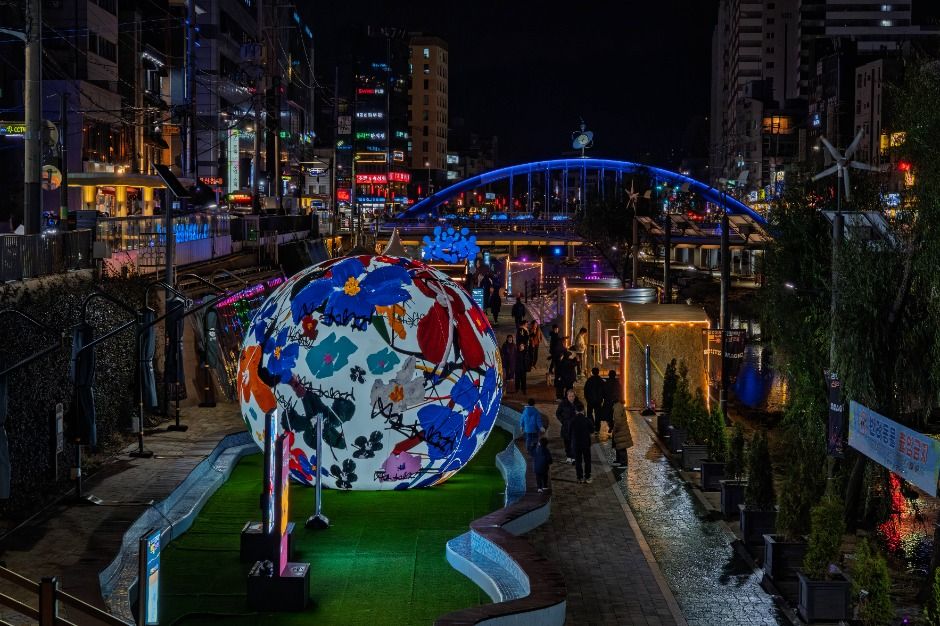
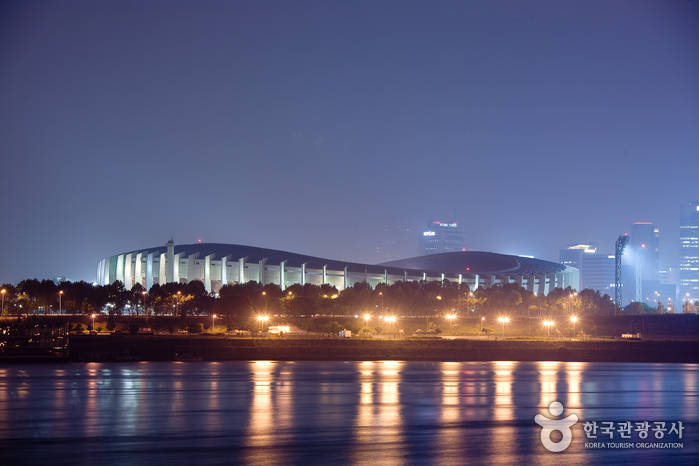
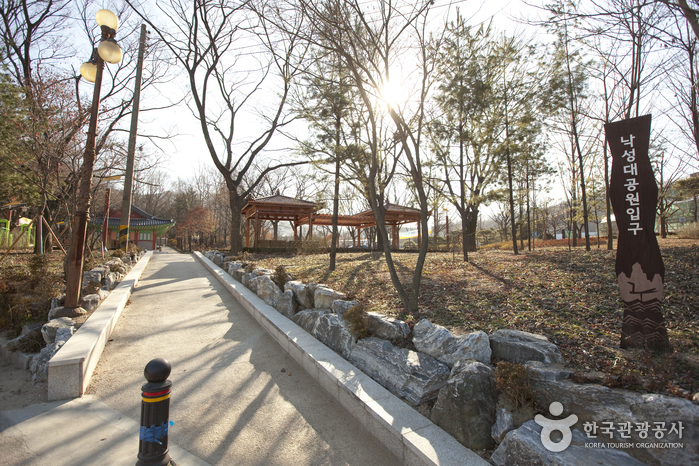
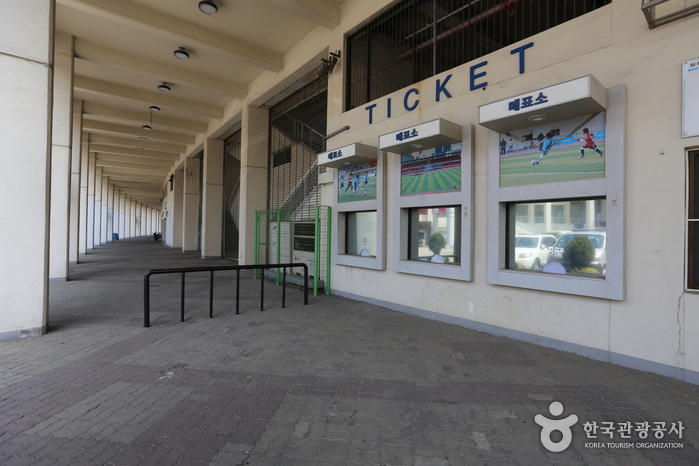

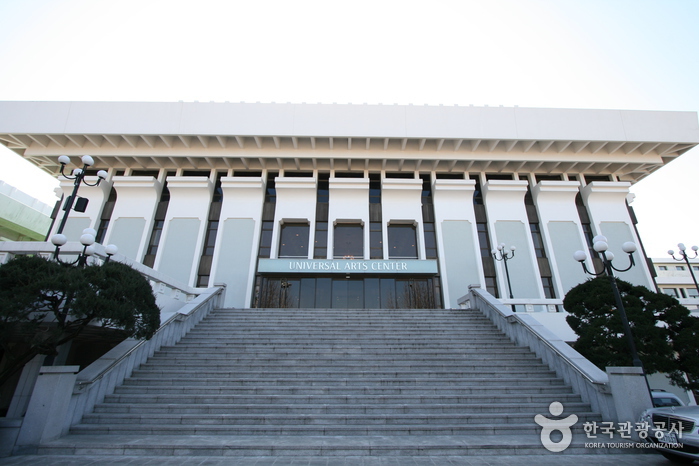
 Español
Español
 한국어
한국어 English
English 日本語
日本語 中文(简体)
中文(简体) Deutsch
Deutsch Français
Français Русский
Русский